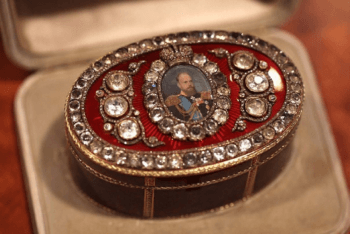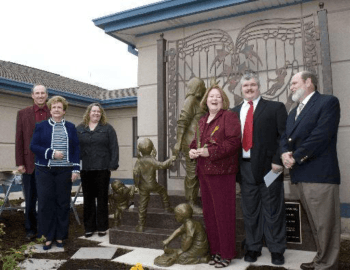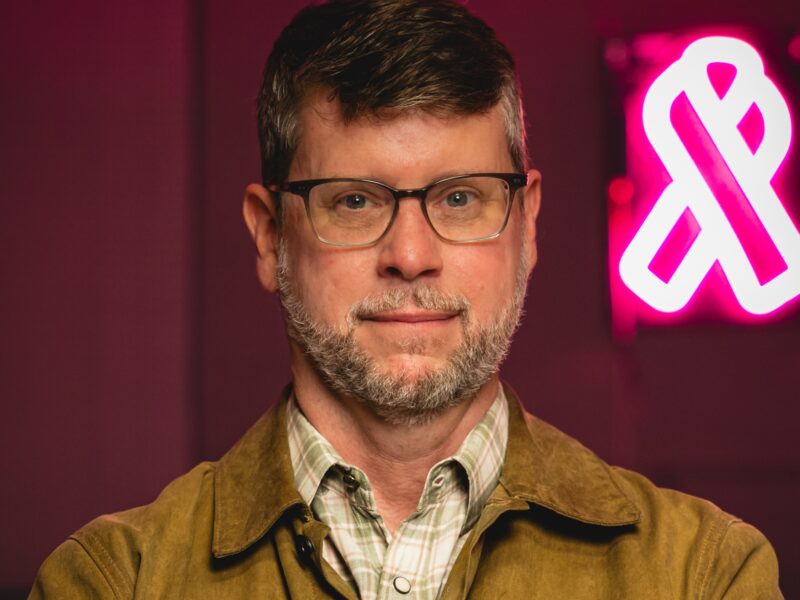Philanthropy Of McFerrins Impacts Art And More At Texas A&M
Artie McFerrin and his wife Dorothy McFerrin have enhanced the impact of Texas A&M University on society through a diverse range of contributions.
Arthur R. “Artie” McFerrin, Jr., earned his bachelor’s of science in 1965 and a master’s of science in 1969, both in chemical engineering from Texas A&M. Artie began his career in 1967 with Shell Chemical. In 1975, he founded KMCO, a chemical processing and manufacturing company, which in 1983 was named by Inc. magazine as “America’s Fastest Growing Privately Owned Business.”
The McFerrins are avid collectors of Russian art.

They are the owners of one of the most important privately held Faberge collection. Peter Karl Faberge was a Russian jeweler who made intricately designed eggs that were gifted by the Tsar Alexander III to his wife, Maria Feodorovna as Easter gifts. The Tsarina was so pleased that the Tsar then ordered Faberge to create a new egg each Easter. After the Tsar’s death, the Tsar’s son continued the tradition. Over a period of three decades, the House of Faberge created 65 large unique Easter eggs – 57 of which are known to survive today. The House of Faberge also made other decorative objects from fine jewelry to silver flatware. Some highlights of the McFerrin collection are shown below.
The Bismarck Box:
The Bismarck box is an imperial presentation box with a portrait of the Tsar on it. It was presented to Reichs-Chancellor Bismarck of Germany by Alexander III in 1889 as a symbol of good relations between the two nations.

The Nobel Egg:
Faberge made eggs for the Tsar and only a very few other clients. Swedish industrialist Dr. Emanuel Nobel was one of them, and he commissioned this treasure between 1913 and 1914. This piece, a jeweled enameled Faberge presentation egg, is also referred to as the Snowflake Egg. The shell is ingeniously enameled and engraved to simulate the tracery of frost against a misted ground. It opens to reveal a ‘surprise’ jeweled rock crystal and diamond pendent watch. This design was made specifically for Dr. Nobel and interpreted in other jewelry pieces by Faberge. Dr. Nobel gave these as favors at his dinner parties.
The Imperial Diamond Trellis Egg:

The Diamond Trellis Egg is a jeweled enameled Easter egg made by A. Holmstein under the supervision of the Russian jeweler Peter Carl Faberge in 1892.The egg was made for Alexander III of Russia, who presented it to his wife, the Empress Maria Feodorovna. The egg is made of gold, jadeite, rose-cut diamonds, silver and satin. It is carved from pale green jadeite and is enclosed in a lattice of rose-cut diamonds with gold mounts. Originally it had a base of three cherubs said to represent the three sons of the imperial couple, the Grand Dukes Nicholas, George and Michael.
The McFerrin Collection also contains carved, jewel encrusted and enameled eggs in many other forms including seals, scent bottles, cosmetic cases and pendants, a pink sapphire and diamond brooch, as well as cigarette and cosmetic cases, clocks, picture frames and other objects from the workshops of Faberge. The collection includes over 300 objects and is still expanding.
The generosity of the McFerrin family has brought the Faberge exhibit to campus. More than 80 objects ranging from the practical to exotic, including jewelry, enameled bell pushes, a silver net purse, bejeweled picture frames, cigarette cases and eggs are featured in the ongoing exhibition “The Allure of Faberge: Selections from the Dorothy and Artie McFerrin Collection” at J. Wayne Stark Art Galleries, located in the Memorial Student Center. The exhibition has attracted more than 10,000 visitors to the galleries since the MSC’s grand reopening in April. The exhibition will run through Aug. 19.

The McFerrin family has made several other significant contributions to Texas A&M. In the context of art, Dorothy played a key role in setting up the ‘Gates of Learning’ sculpture at the Becky Gates Children’s Center. She set up a $1 million endowment for a day care and preschool center for the children of Texas A&M faculty, students and staff, named in honor of Becky Gates, the wife of former Texas A&M President Robert Gates. Dorothy McFerrin and Becky Gates are great friends and shared a keen interest in improving education and childcare.
The ‘Gates of Learning’ sculpture represents Becky leading the children into a realm of education. The children of Becky and Bob Gates and the granddaughter of the McFerrins served as models for children in the sculpture.
The McFerrin family has made their name synonymous with Aggie philanthropy. Artie, along with his wife, committed $10 million in 2005 to establish an endowed fund in the Department of Chemical Engineering, which was later named in his honor. The McFerrin family also has endowed a professorship in chemical engineering and is a lead donor to two new athletic facilities at Texas A&M: the indoor practice fields and a state-of-the-art basketball complex.
More information about the University Art Galleries is available online.
Media contact: tamunews@tamu.edu.





